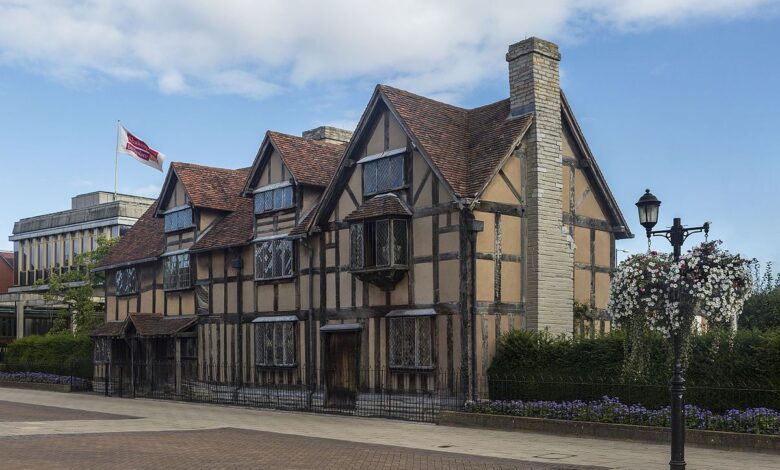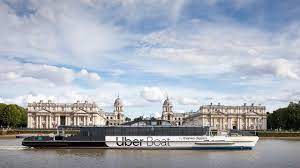Stratford upon Avon

Stratford upon Avon: A Charming East Midlands Gem
Introduction
Stratford upon Avon is a historic market town in Warwickshire, England, forever linked to the legacy of William Shakespeare. While many visit to walk in the footsteps of the Bard, Stratford upon Avon offers far more: riverside charm, Tudor houses, theatre, and cultural life. In this article, we will explore Stratford upon Avon’s history, landmarks, culture, and travel tips — all in a clear, easy-to-read style.
Origins and Early History
Name and Location
The name Stratford upon Avon comes from three elements: “stræt” (Old English for “street” or Roman road), “ford” (a shallow river crossing), and “Avon”, which is from a Celtic word meaning “river.” Thus, the name essentially means “street crossing the river Avon.”
Stratford upon Avon lies on the River Avon in Warwickshire, about 22 miles southeast of Birmingham and 91 miles northwest of London.
From Village to Market Town
Originally inhabited by Britons and later settled by Anglo-Saxons, the area that is now Stratford upon Avon remained a modest village until the late 12th century.
In 1196, the lord of the manor, John of Coutances, laid out a new town plan with burgage plots (plots people could rent and pass on) to encourage trade and settlement. That same year, King Richard I granted a charter for Stratford to hold a weekly market, giving it formal status as a market town.
Stratford upon Avon and Shakespeare
The Birthplace of the Bard
The reason many people know Stratford upon Avon is its connection to William Shakespeare, born in 1564. His childhood home on Henley Street is preserved as a museum where visitors can see where his early life began.
Shakespeare is also buried in the town’s Holy Trinity Church, which lies beside the River Avon.
Historical Growth and Economy
By Shakespeare’s time, Stratford upon Avon had become a thriving market town with trade in wool, tanning, glove-making, and agriculture.
However, between the 13th and 17th centuries, the town’s physical growth was modest despite economic activity.
In the 19th century, the growth of canals and later railroads transformed Stratford’s connectivity and contributed to its expansion.
Landmarks and Places to Visit
Historic Houses and Museums
- Shakespeare’s Birthplace (Henley Street): The home where William Shakespeare was born and raised, now a museum.
- Anne Hathaway’s Cottage: The cottage of Shakespeare’s wife’s family, in nearby Shottery.
- Hall’s Croft: The home of Shakespeare’s daughter Susanna and her husband, Dr. John Hall.
- Nash’s House & New Place: The site of Shakespeare’s later home (New Place) and adjacent Nash’s House.
Theatres and Culture
Stratford upon Avon is home to the Royal Shakespeare Company (RSC), whose productions attract theatre lovers worldwide.
The Royal Shakespeare Theatre and Swan Theatre host plays and performances throughout the year.
The town also hosts a Literary Festival, regular walking tours, and historic events celebrating Shakespeare’s life.
Riverside and Outdoor Attractions
The River Avon flows through the town, offering boat cruises and scenic walks along its banks.
The Stratford-upon-Avon Canal meets the river in the town, and narrowboats can be seen moving along the waterway.
Bancroft Gardens lies beside the river, with open lawns, paths, and views over the water.
Modern Day Stratford upon Avon
Population & Demographics
As of the 2021 census, Stratford upon Avon had a population of about 30,495 people.
The town remains predominantly White (92.7%) with small percentages of Asian, mixed, Black, and other ethnic groups.
Economy and Tourism
Tourism is the lifeblood of Stratford upon Avon. The Shakespeare heritage draws between 2.5 and 3 million visitors each year.
In addition, local industries include hospitality, retail, craft and artisan businesses, light engineering, and creative and service sectors.
Transport Links
- Road: Accessible via the M40 motorway (junction 15) and A46 road linking to Warwick, Coventry, and Evesham.
- Rail: Two stations serve the town, with connections to Birmingham and London, though direct services to London are limited.
- Water: Boat trips along the Avon, and a small chain ferry links Waterside to the opposite riverbank.
- Cycling and Walking: The Stratford Greenway is a traffic-free cycle and walking route following an old rail alignment.
Interesting Facts & Tidbits
- Stratford upon Avon celebrated its 800th anniversary in 1996, marking 800 years since the granting of the market charter in 1196.
- The town plays a small but intriguing role in the Gunpowder Plot: Clopton House in the vicinity was rented by Ambrose Rookwood, one conspirator, and relics were found after the plot was foiled.
- Stratford’s river and canal systems once made it an inland port, trading goods such as sugar, oil, wine, iron and cheese.
Tips for Visiting Stratford upon Avon
- Buy tickets in advance for popular Shakespeare houses and theatre performances, especially in summer.
- Walk the Historic Spine — the sequence of streets that link the major Shakespeare sites: Henley Street → High Street → Chapel Street → Church Street → Old Town.
- Time your visit around April 23rd (Shakespeare’s birthday) when parades, performances, and celebrations take place.
- Boat ride on the Avon offers a relaxing vantage of the town from the water.
- Be prepared for crowds—during peak tourist months, some museums and streets can be busy.
🏰 Frequently Asked Questions (FAQ) About Stratford upon Avon
1. Where is Stratford upon Avon located?
Stratford upon Avon is located in Warwickshire, England, on the banks of the River Avon. It lies about 22 miles southeast of Birmingham and around 90 miles northwest of London.
2. Why is Stratford upon Avon famous?
Stratford upon Avon is world-famous as the birthplace of William Shakespeare, the greatest playwright in English literature. The town is also home to the Royal Shakespeare Theatre, charming Tudor-style buildings, and beautiful riverside scenery.
3. What can you do in Stratford upon Avon?
Visitors to Stratford upon Avon can explore Shakespeare’s Birthplace, Anne Hathaway’s Cottage, and Holy Trinity Church, where Shakespeare is buried. You can also take a relaxing boat ride on the River Avon, enjoy performances by the Royal Shakespeare Company, and walk through the historic town centre.
4. What is the best time to visit Stratford upon Avon?
The best time to visit Stratford upon Avon is from April to October, when the weather is pleasant and most events, including the Shakespeare Birthday Celebrations, take place. Spring and early summer offer ideal sightseeing conditions.
5. How do you get to Stratford upon Avon?
Stratford upon Avon is easily accessible:
- By road: via the M40 motorway and A46 road.
- By train: direct services run from Birmingham and London (via Leamington Spa).
- By bus: National Express and local services connect nearby cities.
6. Is Stratford upon Avon worth visiting?
Absolutely! Stratford upon Avon is one of the most charming towns in England, offering a perfect blend of history, culture, theatre, and nature. Whether you’re a Shakespeare fan or simply love picturesque English towns, it’s well worth the trip.
7. How long should I spend in Stratford upon Avon?
A one-day trip is enough to see the main attractions, but staying two or three days allows you to experience the theatre, museums, local markets, and riverside walks at a relaxed pace.
8. What are the top attractions in Stratford upon Avon?
The most popular places to visit include:
- Shakespeare’s Birthplace
- Anne Hathaway’s Cottage
- Royal Shakespeare Theatre
- Hall’s Croft
- Holy Trinity Church
- The River Avon and Bancroft Gardens
9. Is Stratford upon Avon good for families?
Yes, Stratford upon Avon is family-friendly! There are boat trips, interactive museums, parks, and guided tours that both children and adults will enjoy.
10. What makes Stratford upon Avon unique?
What makes Stratford upon Avon truly special is its rich literary heritage, preserved Tudor architecture, and vibrant cultural scene. It’s a town where England’s history meets art and theatre, creating an unforgettable experience for every visitor.




